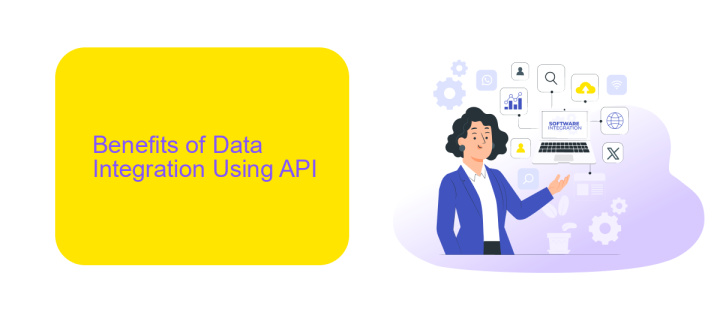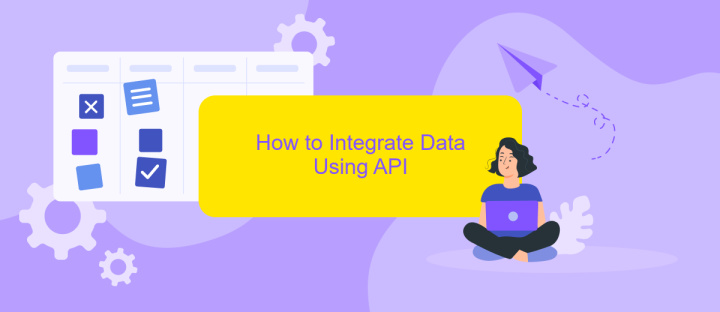Data Integration Using API
Data integration using APIs has become a cornerstone for modern businesses, enabling seamless communication between disparate systems. By leveraging APIs, organizations can efficiently consolidate data from various sources, fostering enhanced decision-making and operational efficiency. This article explores the fundamentals of API-driven data integration, its benefits, and best practices to ensure a smooth and secure implementation.
Introduction
Data integration using APIs has become a cornerstone for modern businesses seeking to streamline their operations and enhance data accessibility. APIs, or Application Programming Interfaces, enable different software systems to communicate with each other, facilitating the seamless exchange of data. This integration is crucial for organizations looking to leverage diverse data sources for better decision-making and operational efficiency.
- Improved data accuracy and consistency
- Enhanced operational efficiency and automation
- Real-time data access and updates
- Scalable and flexible integration solutions
One of the key tools in achieving effective data integration is ApiX-Drive, a platform designed to simplify the process of connecting various applications and services. By using ApiX-Drive, businesses can automate data flows between different systems without the need for extensive coding or technical expertise. This not only saves time but also ensures that data is synchronized across platforms, providing a unified view of information that drives strategic initiatives.
Benefits of Data Integration Using API

Data integration using APIs offers numerous benefits, enhancing efficiency and accuracy in data management. By leveraging APIs, organizations can seamlessly connect disparate systems, ensuring real-time data exchange and reducing the risk of data silos. This integration method allows for automated data synchronization, which not only saves time but also minimizes human errors, leading to more reliable and consistent data across platforms.
Moreover, using services like ApiX-Drive simplifies the process of setting up and managing these integrations. ApiX-Drive provides an intuitive interface and robust features that enable even non-technical users to configure and monitor data flows between various applications effortlessly. This democratization of data integration means businesses can quickly adapt to changing needs and scale their operations without the need for extensive IT resources. Ultimately, integrating data using APIs fosters better decision-making by providing a unified view of information, enhancing operational agility and competitive advantage.
How to Integrate Data Using API

Integrating data using an API can streamline your business processes and enhance data accuracy across various platforms. The process involves a series of steps to ensure seamless data flow between systems.
- Identify the data sources and target systems that need to be integrated.
- Choose a reliable API integration tool such as ApiX-Drive to facilitate the connection.
- Obtain the necessary API credentials (API keys, tokens) from both the source and target systems.
- Configure the API endpoints to define the data flow and transformation rules.
- Test the integration to ensure data is accurately transferred and mapped between systems.
- Monitor and maintain the integration to address any issues and ensure continuous data synchronization.
Using a service like ApiX-Drive simplifies the integration process by providing a user-friendly interface and pre-built connectors for various platforms. This reduces the technical complexity and allows you to focus on leveraging the integrated data for better decision-making and operational efficiency.
Best Practices for Data Integration Using API

Effective data integration using APIs requires careful planning and adherence to best practices to ensure seamless and reliable data flow. Start by thoroughly understanding the data structures and formats of both the source and target systems. This understanding will help in mapping data fields accurately and avoiding potential data mismatches.
Next, ensure that your API endpoints are secure and that data transmission is encrypted. Security is paramount to protect sensitive information from unauthorized access and breaches. Additionally, implementing rate limiting and error handling mechanisms can prevent system overloads and ensure smooth operation even during peak times.
- Use standardized data formats like JSON or XML for consistency.
- Leverage API management tools like ApiX-Drive for streamlined integration processes.
- Regularly monitor API performance and set up automated alerts for any anomalies.
- Document your API endpoints and integration workflows for future reference and maintenance.
Finally, test the integration thoroughly in a staging environment before deploying it to production. This helps in identifying and fixing any issues without impacting the live system. Continuous monitoring and periodic reviews of the integration setup will ensure long-term reliability and performance.
Conclusion
In conclusion, data integration using APIs has become an essential practice for modern businesses seeking to streamline their operations and enhance data accessibility. By leveraging APIs, organizations can seamlessly connect disparate systems, enabling real-time data flow and improving overall efficiency. This approach not only reduces manual data entry errors but also allows for more informed decision-making through the availability of up-to-date information.
Tools like ApiX-Drive facilitate this process by providing a user-friendly platform for setting up and managing API integrations without the need for extensive coding knowledge. Such services offer pre-built connectors and automation capabilities, making it easier for businesses to integrate various applications and services quickly. As a result, companies can focus more on their core activities, knowing that their data integration needs are reliably handled. Embracing API-driven data integration is a strategic move that can significantly enhance operational agility and drive business growth.
FAQ
What is Data Integration using API?
Why is API-based Data Integration important?
How can I ensure the security of data during API integration?
What are the common challenges in API-based Data Integration?
Can I automate the process of API integration?
Routine tasks take a lot of time from employees? Do they burn out, do not have enough working day for the main duties and important things? Do you understand that the only way out of this situation in modern realities is automation? Try Apix-Drive for free and make sure that the online connector in 5 minutes of setting up integration will remove a significant part of the routine from your life and free up time for you and your employees.

